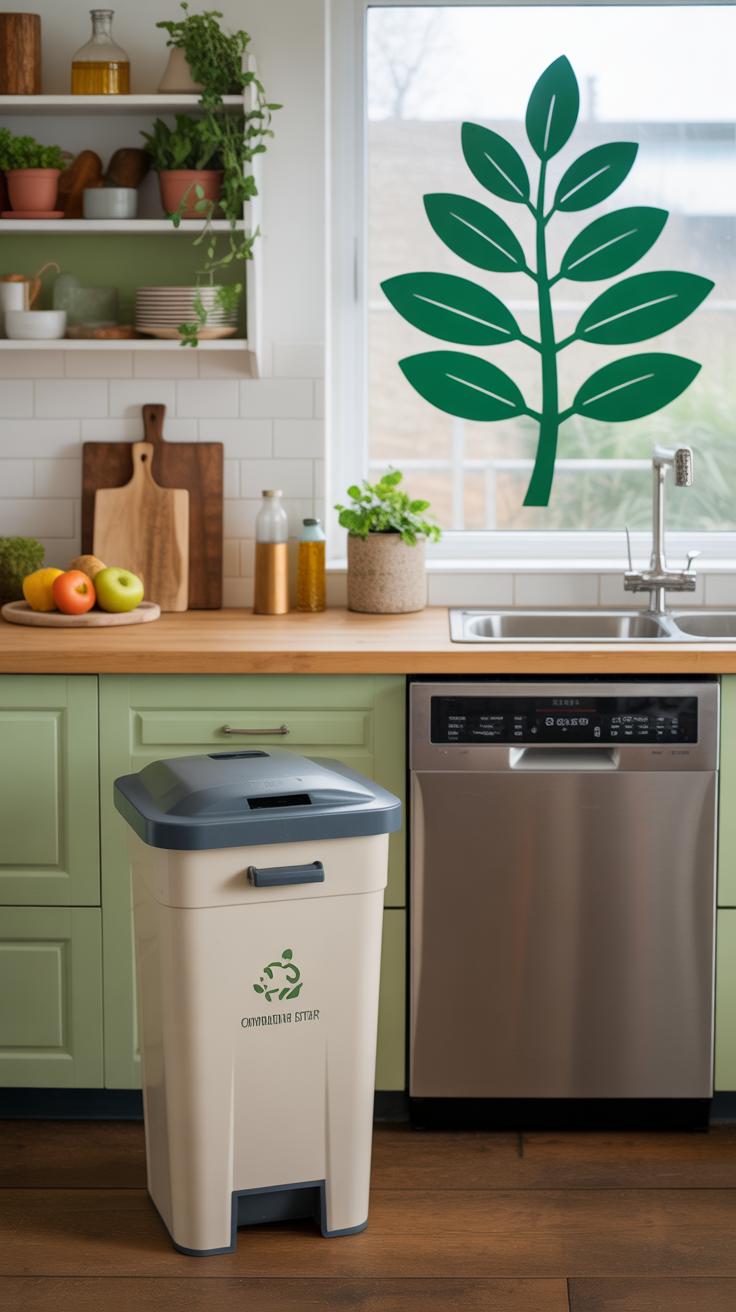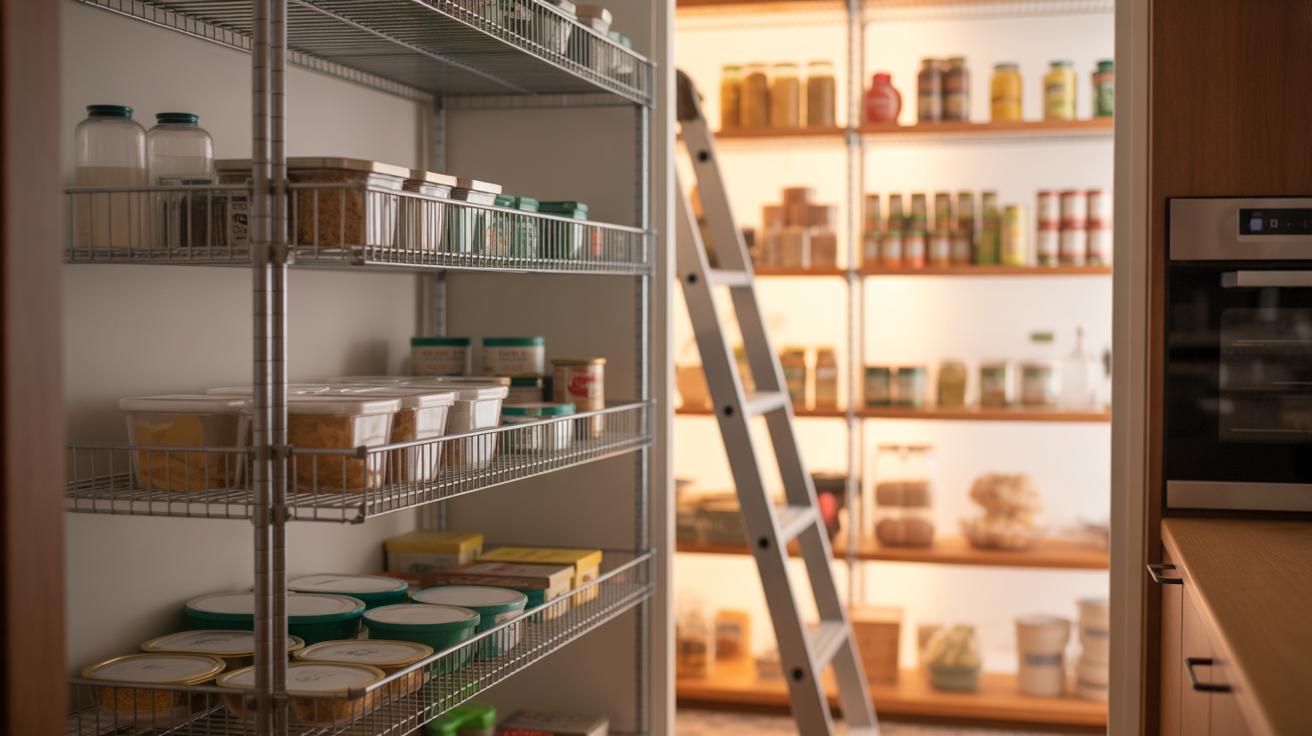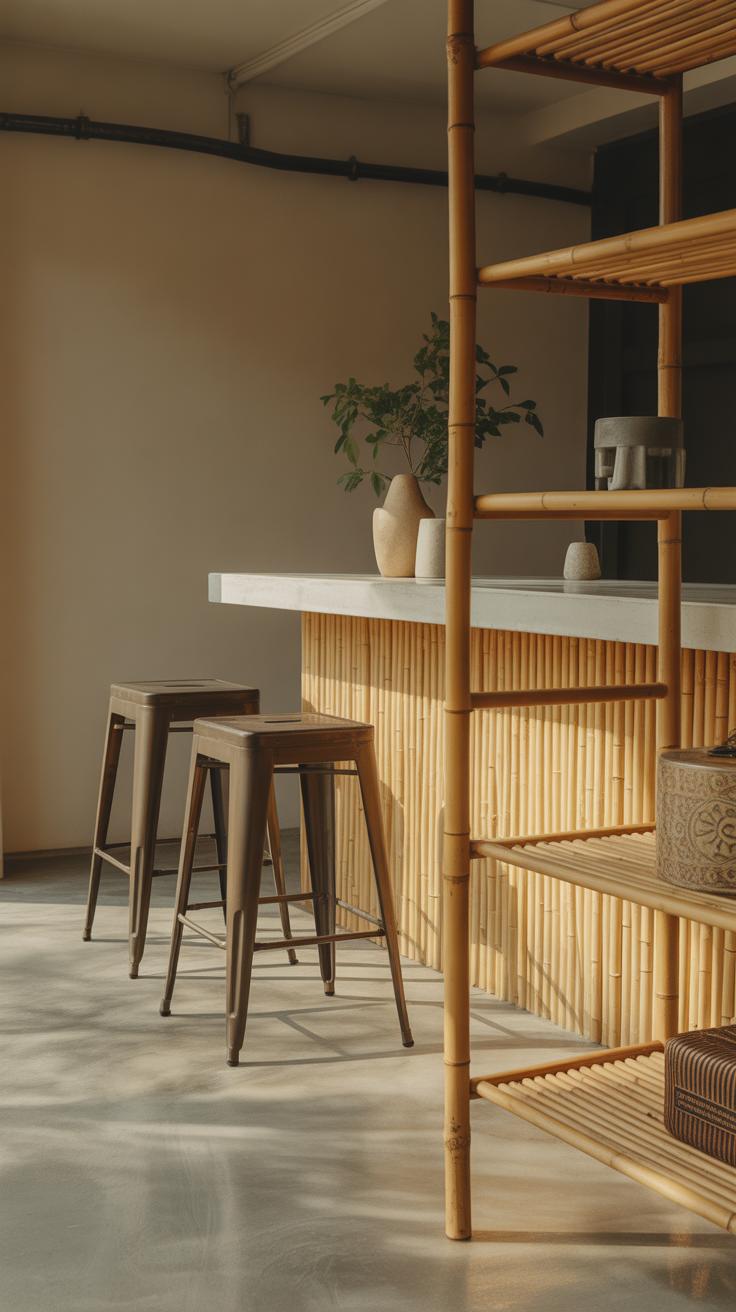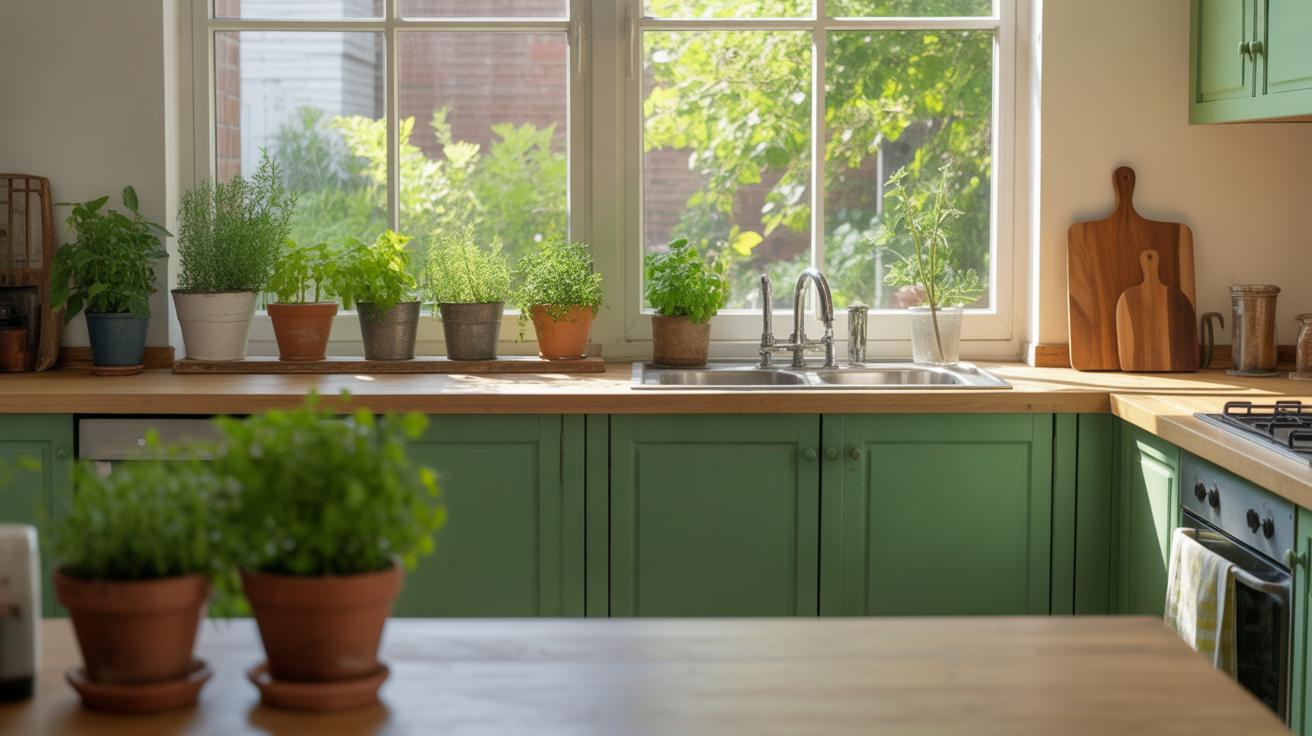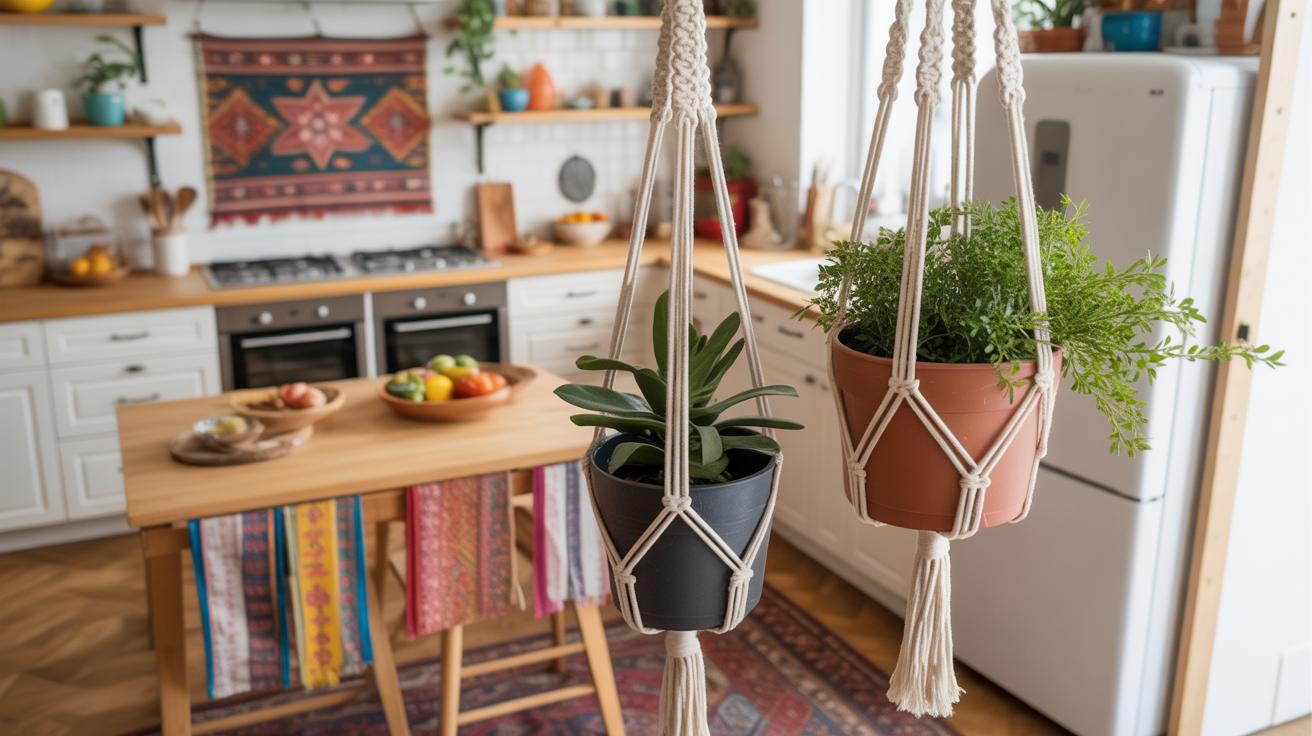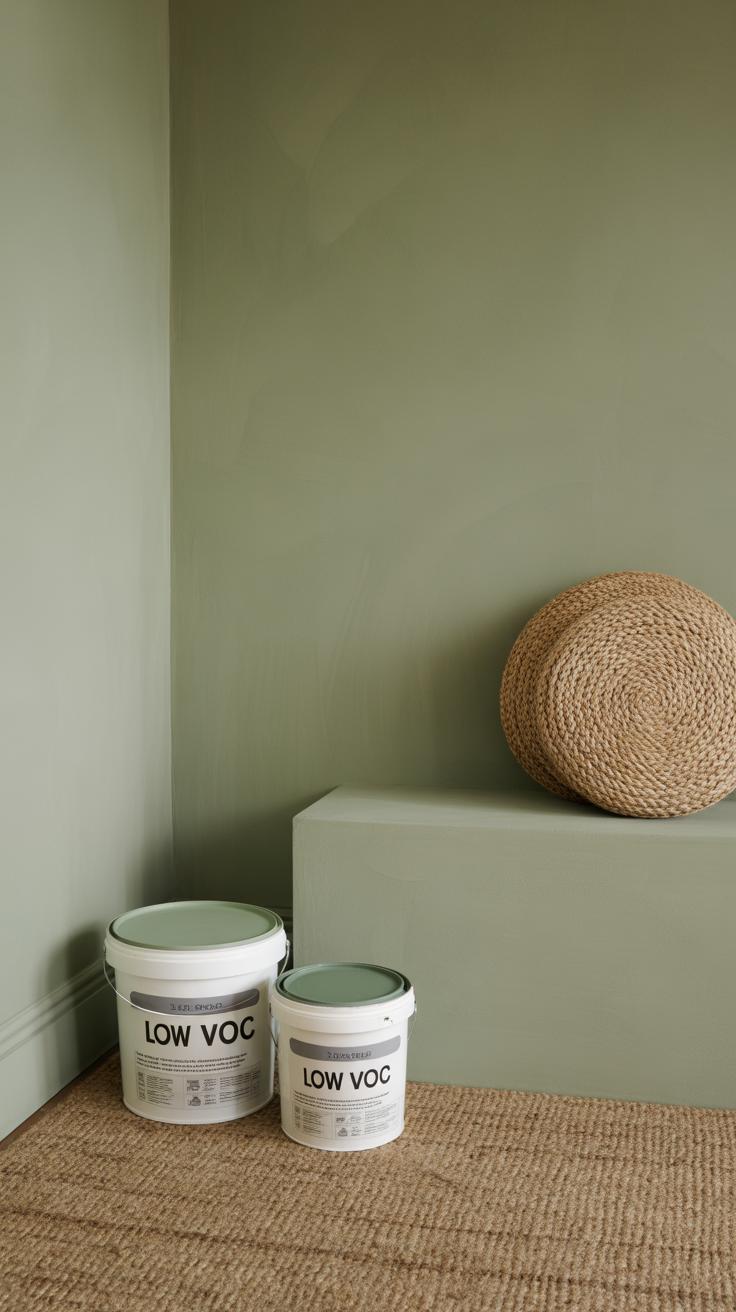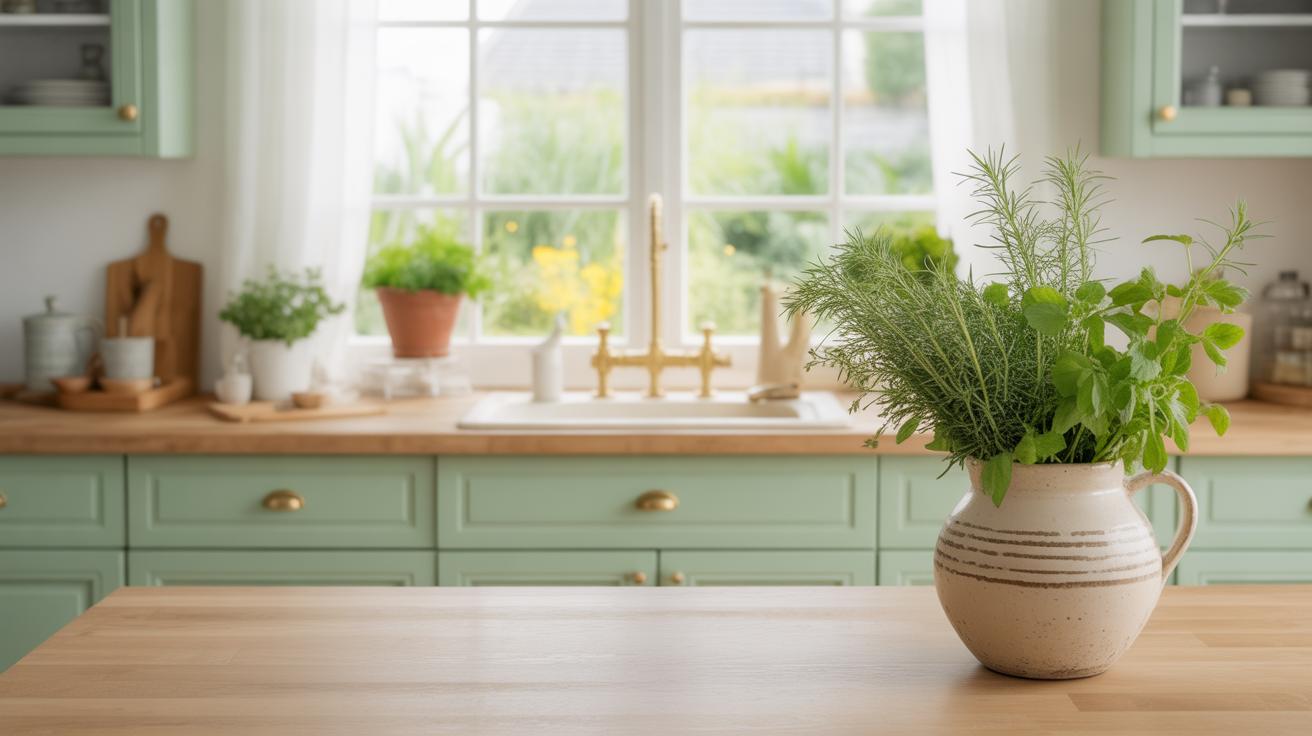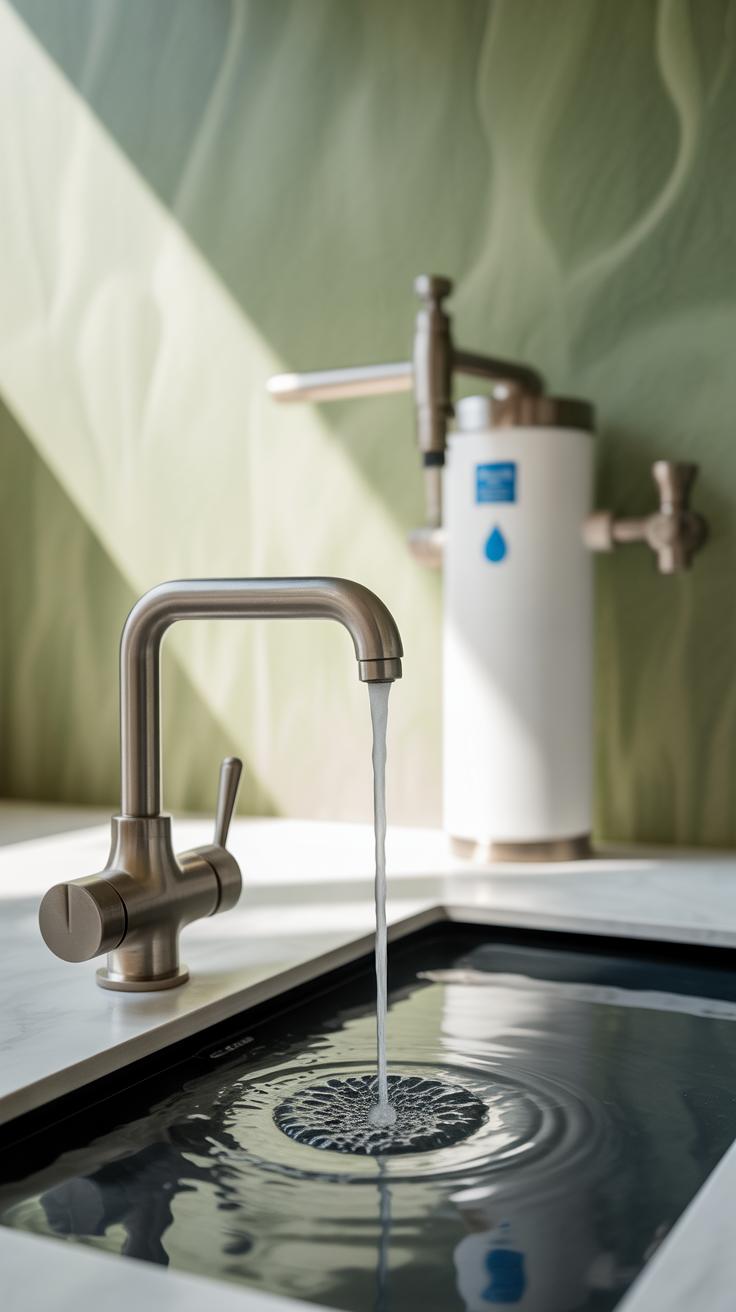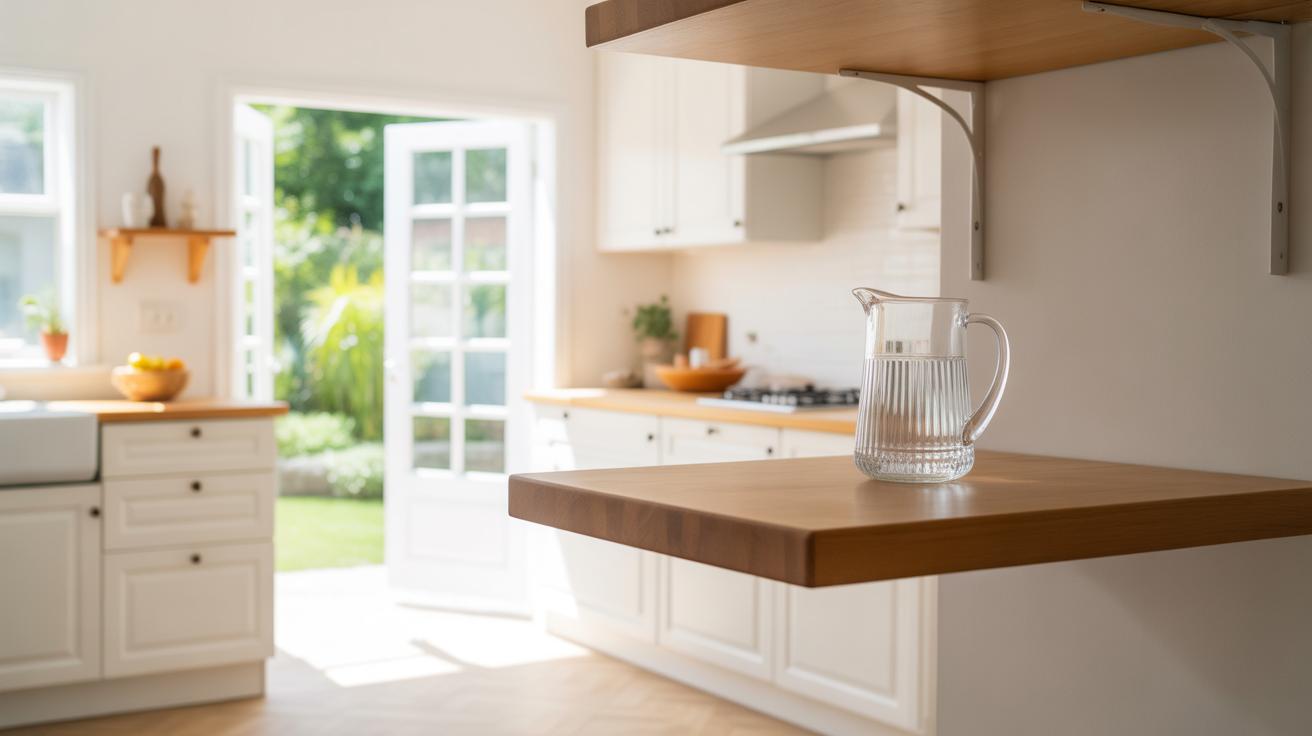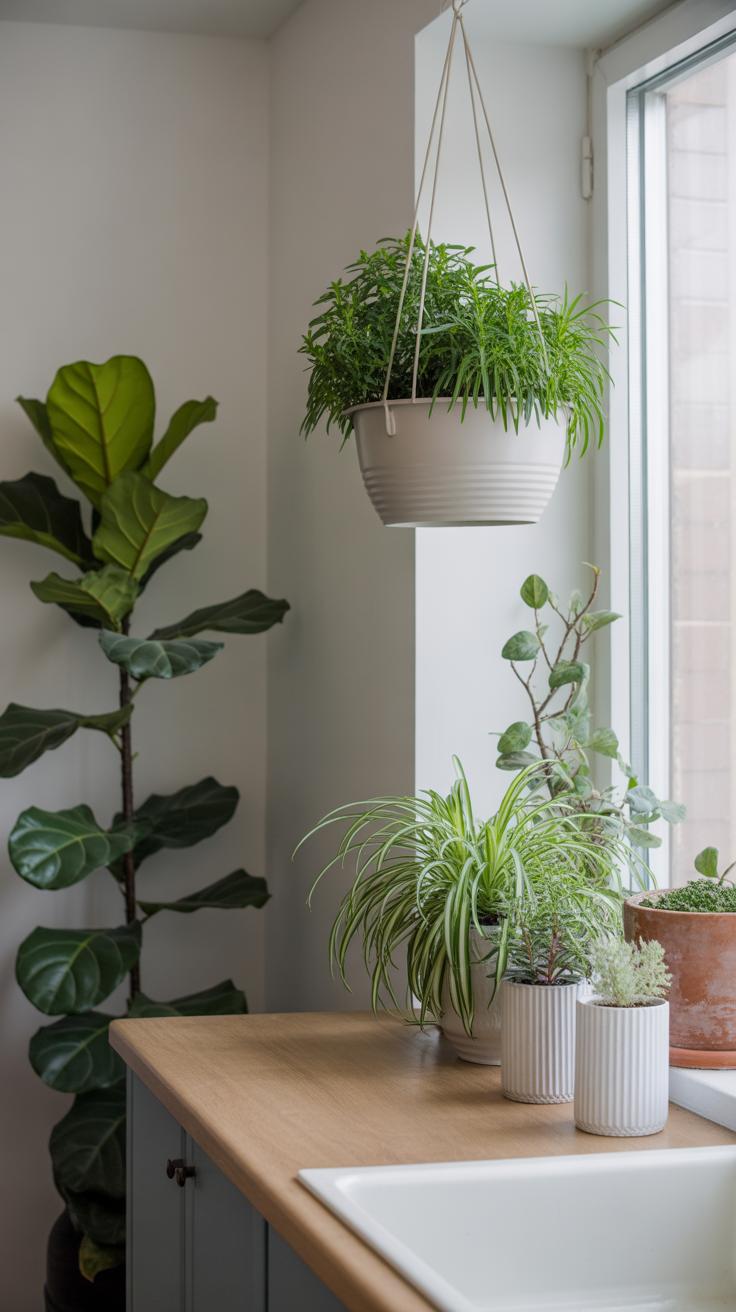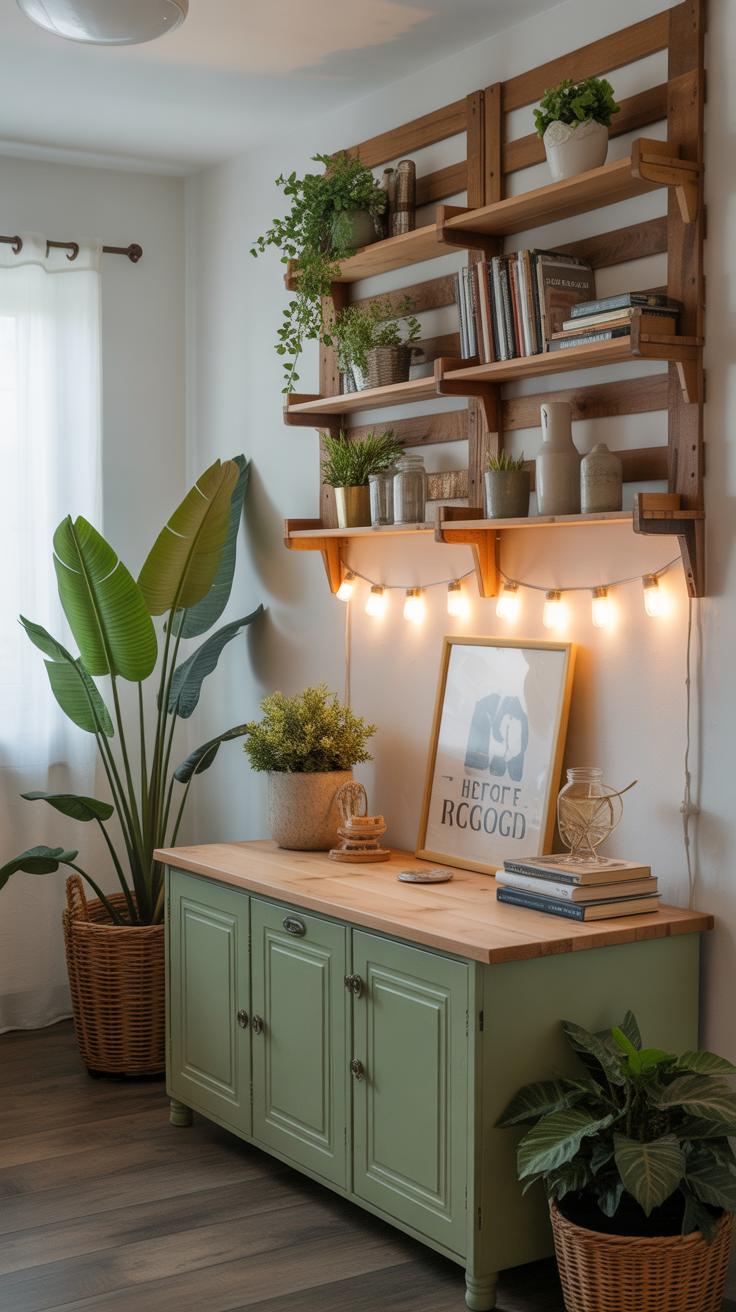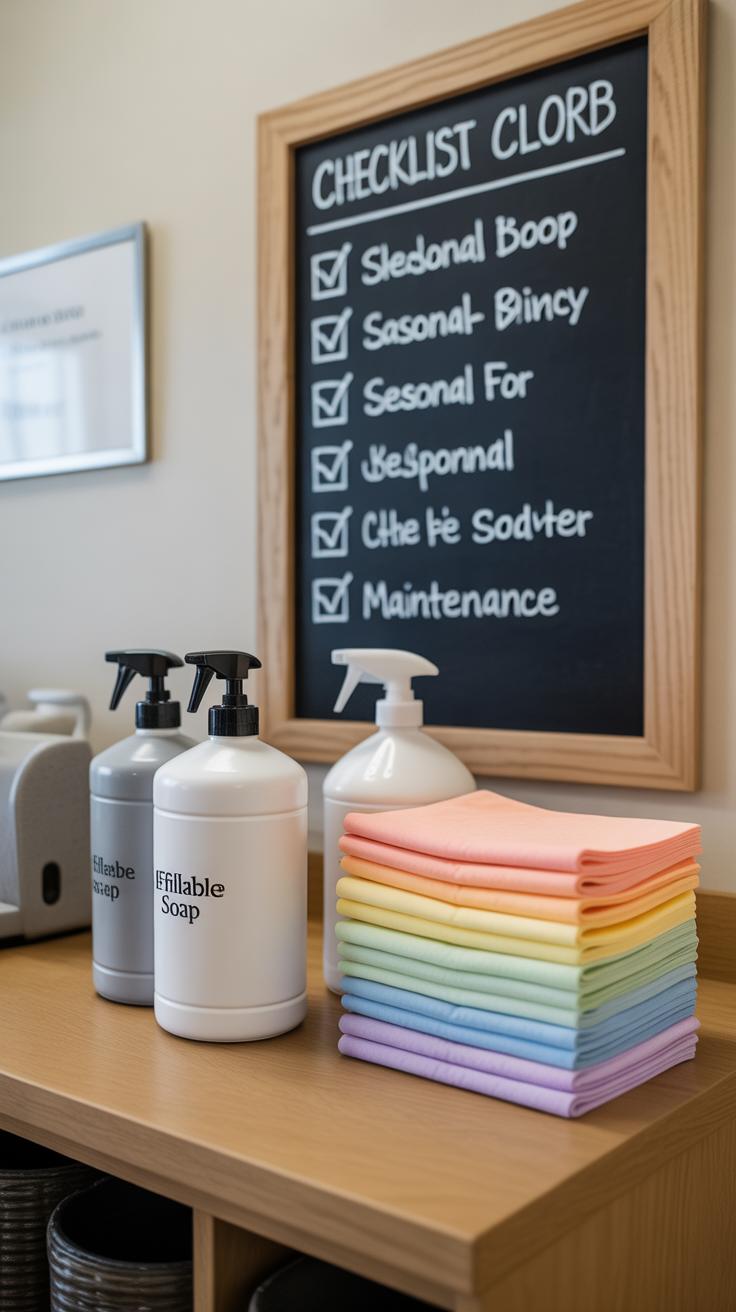Introduction
Green kitchen designs focus on creating spaces that are better for the environment. These kitchens use eco friendly materials and save energy. They also help reduce waste and pollution in your home. Building a green kitchen is about making smart choices that protect the earth while keeping your kitchen functional and nice to use.
In this article, you will learn how to design a green kitchen for an eco friendly and sustainable home. You will see how to pick the right materials, appliances, and designs to make your kitchen greener. We will explore many ideas to help you create a kitchen that respects nature and fits your lifestyle.
Why Green Kitchen Designs Matter
Designing a green kitchen isn’t just about looking good or following a trend—it’s about making choices that affect both your home and the planet in real ways. When you focus on reducing waste, saving energy, and using safe materials, you help cut down the strain on natural resources and minimize pollution.
Think about how much energy kitchens consume every day. From lighting to appliances that run constantly, traditional designs often overlook these details. This leads to higher bills for you and higher emissions for the environment. Choosing energy-saving options lets you keep costs down and feels like a small victory for nature.
Waste is another big issue. Conventional kitchens generate tons of packaging, food scraps, and discarded items that end up in landfills. A green kitchen encourages smart planning and composting, making it easier to toss less and recycle more. You might guess that choosing materials carefully doesn’t matter much, but many common kitchen surfaces and finishes release chemicals over time, affecting indoor air quality.
Green kitchens try to avoid those risks by opting for natural, less toxic materials. Your health benefits too, not just the planet’s. Cooking in a space free from harmful substances feels better, maybe even safer for your family. It doesn’t mean you need to overhaul everything overnight, yet small changes can add up.
Why care? Because your kitchen is more than just where meals happen. It’s a space that impacts daily habits and, by extension, the world outside your door. If we start treating kitchens as part of a bigger environmental picture—and a healthier home—you might find the effort well worth it.
Choosing Sustainable Materials for Your Kitchen
When it comes to picking materials for your kitchen, the choice can feel overwhelming. But if you focus on options that are renewable, recycled, or just less harmful to the environment, you start to narrow things down pretty quickly. Think about countertops first—they’re a big part of your kitchen’s look and function.
Eco Friendly Countertop Options
Some popular green countertops include bamboo, recycled glass, and sustainably harvested wood. Bamboo grows fast, making it a renewable resource. It’s also lightweight and surprisingly strong, though it can scratch more easily than stone.
Recycled glass countertops catch the eye with their unique, colorful patterns. They’re durable and resist stains, but you might want to avoid harsh impacts as chips can happen. Plus, they often include remnants from bottle recycling, so it’s like giving waste a second life.
For wood lovers, choosing FSC-certified wood means it comes from well-managed forests. Wood surfaces warm the kitchen, but expect periodic sealing to keep them safe from water damage or stains.
Sustainable Flooring Materials
Flooring is a major factor in sustainability—choose right, and you reduce your home’s footprint quite a bit. Cork flooring feels soft underfoot and comes from the bark of cork oak trees, which regenerate naturally without cutting the tree down. It’s resilient and insulating, though it may show dents if you’re not careful.
Reclaimed wood flooring brings character and history into your kitchen. Salvaged from old buildings or barns, it keeps wood out of landfills. But without proper treatment, it could carry nails or uneven surfaces, so plan on thorough prep.
Linoleum, made from natural materials like linseed oil and wood flour, has come back in style. It lasts decades and resists bacteria better than many synthetics. You’ll want to clean it gently to avoid dulling the finish, but it’s a solid, earth-friendly choice.
Picking materials this way isn’t just about being “green.” It’s about creating a kitchen you’ll enjoy using—and living in—without feeling bad about what went into building it. What materials resonate with your style and values? Sometimes that’s the trickiest question of all.
Energy Efficient Appliances for Green Kitchens
Picking kitchen appliances that save energy can feel like a bit of a puzzle. You want to lower your electricity use and bills but don’t want to buy something that performs poorly or breaks down quickly. The trick is to look for models with clear energy ratings—Energy Star labels are a good place to start. They indicate products meeting strict energy standards without compromising results.
Choosing the right refrigerator and oven
Refrigerators are among the biggest energy users in your kitchen. Picking one with a high Energy Star rating can reduce power use noticeably. Look for features like advanced insulation, efficient compressors, and LED lighting inside. Upright models often waste less energy than side-by-side types, but that can vary. For example, brands like Whirlpool and Bosch offer models that balance performance and lower consumption well.
Ovens, especially electric ones, draw a lot of power. Convection ovens use fans to circulate heat, cutting cooking times and energy use, so they might save more than a traditional oven despite seeming complex. Some newer models also have better insulation. GE’s Profile series and Samsung’s smart ovens showcase these traits. You might wonder if these fancy options really matter—but over time, the savings do add up.
Water saving dishwashers and faucets
Water use often slips under the radar when thinking green. Dishwashers with efficient cycles and sensors adjust water and energy use to match the load. Brands like Miele and Bosch produce quiet dishwashers that use less water—sometimes half the amount an average machine needs. It feels a bit surprising that a machine can be that water-wise while still cleaning stubborn grime.
As for faucets, installing low-flow models or those with aerators can cut water use considerably without an obvious drop in pressure. Motion sensor faucets prevent water from running unnecessarily, which you might appreciate during busy cooking or cleanup moments. Switching to these can lower your water bill and reduce strain on local supplies—a small step that feels quite impactful when you notice the difference over a month or two.
Smart Kitchen Layout for Sustainability
Designing your kitchen layout with sustainability in mind isn’t just about looks—it directly impacts how much energy and food you waste. When you place frequently used appliances and storage close together, you spend less time clearing clutter or reheating forgotten meals. It’s a small detail but one that can cut down on unnecessary electricity use and food spoilage.
Think about how natural light and ventilation fit into your plan. Windows, skylights, and vents can flood your kitchen with daylight and fresh air, reducing the need for artificial lighting and fans during the day. I remember once spending a weekend in a small cottage kitchen; no electricity needed for three days. That fresh air and sunlight made a surprising difference in comfort and smell. Air quality improves, plus your bills take a break.
Then there’s storage, which often gets overlooked but plays a huge role in waste. Using containers that seal well or sections designed to separate perishables helps food last longer. Ever opened your fridge to find an orange rotten under fresh lettuce? Frustrating, right? Organizing storage well avoids that. It’s practical—knowing where everything is reduces impulse buys that never get eaten. Your layout, light, air, and storage choices all tie back to saving resources, maybe more than you expected.
Using Eco Friendly Paints and Finishes
When choosing paints for your kitchen, you might not immediately think about what’s lurking in those cans. But many traditional paints contain VOCs—volatile organic compounds—that release gases harmful to both your health and the environment. These chemicals can cause headaches, irritation, and even long-term issues, which is especially concerning in a space where you prepare food.
Low VOC and zero VOC paints reduce this problem by cutting or eliminating these harmful emissions. They still offer a range of colors and finishes, so you don’t have to sacrifice style for safety. Brands like Benjamin Moore’s Natura, Sherwin-Williams Harmony, and ECOS Paints are popular options that focus on these cleaner formulas.
On another note, wood finishes in kitchens can be tricky. Many traditional varnishes and sealants carry the same chemical concerns as paints. Natural alternatives like tung oil, linseed oil, and beeswax protect wood without adding toxins. I’ve found that applying a few thin coats of organic tung oil not only enhances the grain but keeps the air fresher. Plus, these oils tend to age well, requiring only simple maintenance.
Have you ever thought about the invisible impact your kitchen finishes have on indoor air quality? Choosing paints and finishes that contain fewer chemicals can make your kitchen a safer place for your family and slightly gentler on the planet.
Water Conservation in Your Kitchen
You might not think much about the faucet in your kitchen, but swapping it for a low flow model can make a real difference. These faucets and aerators reduce water flow without cutting down pressure, so you barely notice the change. Installation is usually straightforward—remove your old faucet head, screw in the new aerator, and you’re done. No plumbing expertise needed for most models.
I once installed a low flow aerator myself, and honestly, the water pressure felt about the same, yet I saw a noticeable dip in my water bill over a few months. Not all devices are equal though—some cheap ones can give you an annoying spray. It’s worth testing or reading reviews before buying.
When washing dishes, the habits you adopt matter just as much. Filling a basin instead of leaving the tap running saves gallons every time. And if you use a dishwasher, running it only when full cuts down wasted water.
Have you ever left the tap running while scrubbing pots? That small habit adds up. Maybe try rinsing all dishes together or soaking stubborn pans to avoid wasting water with nonstop running taps. It’s a simple shift but can be surprisingly effective. What else could you change without much effort?
Waste Reduction and Recycling in the Kitchen
Creating less waste in your kitchen starts with careful planning. If you buy what you need and use leftovers thoughtfully, food scraps shrink considerably. It’s surprising how often forgotten ingredients spoil—maybe you’ve been there too, staring at a drawer full of expired herbs or half-used sauces. Paying attention to dates and portion sizes helps avoid that. You might even try designating one night a week to use up whatever’s left in the fridge. It can turn into a kind of culinary challenge.
Composting Kitchen Scraps
Starting a compost bin for your kitchen scraps isn’t as complicated as it sounds. All you really need is a container with a lid—a simple bin will do—and a spot outside or in a balcony. Composting turns your peelings, eggshells, coffee grounds, and veggie scraps into rich soil instead of landfill waste. And there’s a real satisfaction in knowing your kitchen waste can give back to your garden or a potted plant.
To begin, collect your food scraps in a small container on the counter. Once it fills, transfer it to your compost bin. Remember to balance green (food scraps) and brown materials (like dry leaves or shredded paper) to keep it healthy. It takes time and patience, yes. But the benefits—less trash, less methane emissions, the smell of earthy soil—make it worth trying.
Setting Up Recycling Stations
Sorting your garbage can be simple—if you arrange your bins thoughtfully. Think about creating separate containers for glass, plastic, paper, and metal right in your kitchen. Most people find that grouping these in a single corner, each clearly labeled or color-coded, makes recycling a habit rather than a chore.
If space is tight, stackable bins or under-sink organizers work well. You might be surprised at how quickly separating recyclables becomes second nature once the setup is easy to use. In my kitchen, I keep a small bin for glass near the fridge and another for plastics beside the sink. That way, I don’t have to think twice when rinsing out a jar or emptying a soda bottle.
Recycling isn’t just about bins—rinsing containers and removing caps can improve the quality of recycled materials. It might seem like an extra step, but it helps. Ultimately, adapting your kitchen’s flow to support recycling connects your daily habits with bigger environmental impacts, even if it’s just a small step.
Incorporating Plants and Natural Elements
Adding plants to your kitchen does more than just brighten the space visually. They actually improve air quality by filtering out toxins while boosting your mood in subtle ways you might not immediately notice. There’s something about greenery that calms the mind, even if it’s just a small herb pot on the windowsill.
Some plants are better suited for kitchen life—those that thrive on a bit of humidity and variable light. Consider these air-purifying options:
- Spider Plant: Tough and easy to care for. Prefers indirect light and occasional watering.
- Snake Plant: Survives low light and irregular watering. Great at filtering formaldehyde.
- Boston Fern: Likes moist soil and indirect sunlight—ideal near a sink.
- Pothos: Grows well in low light, tolerates neglect. Cleans the air efficiently.
- Aloe Vera: Needs bright light and little water. Bonus—can soothe minor burns.
These plants mostly demand minimal care, but watch for signs of overwatering—especially if the kitchen is humid. I found that rotating them every few weeks keeps their leaves lively and avoids leaning toward the light source.
Natural lighting plays a huge role in creating a calm kitchen atmosphere. Try to maximize sunlight through windows or skylights when possible. Even sheer curtains can soften harsh daylight without blocking it.
Materials like wood, stone, and bamboo ground the space. Perhaps a reclaimed wood countertop or bamboo shelving can add warmth and texture without feeling overdone. Stone backsplashes or countertops often keep things cool visually, which feels nice when you’re cooking.
These elements might seem small, but together, they make your kitchen a place where you enjoy spending time—and that matters. Would you try bringing in both plants and natural textures to see how your space changes?
Budget Tips for Building a Green Kitchen
Creating a green kitchen doesn’t have to drain your wallet. You can find affordable eco-friendly materials that both look nice and hold up well over time. For example, reclaimed wood is often cheaper than brand-new hardwood and adds character to your space. Bamboo is another option—it grows fast and feels quite natural without costing too much.
Low VOC paints offer a simple way to freshen up your kitchen walls while reducing harmful fumes. I’ve tried this myself—it’s not just better for the environment but also for your indoor air, especially if you’re sensitive to strong odors. You can save money by doing the painting yourself, which also gives you control over colors and finishes.
Simple DIY projects let you add personality without overspending. Building shelves from recycled wood or old pallets is surprisingly easy, and they bring a touch of rustic charm—though, fair warning, some sanding and nails are usually involved. Even repurposing jars for storage or creating utensil holders out of scraps can enhance your kitchen’s eco feel.
Look around for materials that might otherwise be wasted—sometimes local salvage yards or online marketplaces have hidden gems at low prices. And remember, spare time and a bit of patience can replace costly custom work in many cases. Are you ready to get your hands a little dirty? That’s often where the savings start.
Maintaining Your Green Kitchen for the Long Term
Keeping your green kitchen in good shape takes some attention, but it doesn’t have to feel like a chore. Cleaning plays a big role in extending the life of eco-friendly materials and appliances. Instead of harsh chemicals, try natural alternatives like white vinegar, baking soda, lemon juice, and castile soap. These can tackle grease and stains without flushing toxins down the drain or harming surfaces. For example, mixing baking soda and water into a paste works well for scrubbing countertops gently but thoroughly. It’s a bit more effort than grabbing a spray bottle off the shelf, but you might find the results just as good—if not better.
When something needs fixing, acting quickly helps avoid waste and bigger problems. Tighten loose cabinet hinges or reglue a peeling veneer instead of replacing parts immediately. If you do replace, choose items with sustainability in mind. Energy Star-rated appliances often last longer and use less power, which pays off both for the environment and your bills. As technology shifts and greener options pop up, consider upgrading older fridges, dishwashers, or faucets when they start breaking down or becoming inefficient.
It’s a balancing act—do you repair or replace? Sometimes keeping a trusted tool around is better, and sometimes an upgrade will save resources in the long run. Paying attention to these details can make your kitchen stay friendly to the planet and to your budget for years to come. Don’t rush it; take your time to fit changes into your lifestyle and needs.
Conclusions
Choosing green kitchen designs benefits both your health and the planet. Using sustainable materials, energy efficient appliances, and smart layouts reduce waste and save money. These choices make your kitchen cleaner, safer, and kinder to the environment.
By applying what you learn here, you can build a kitchen that lasts and supports a healthy lifestyle. Your green kitchen will show how small changes can have a big impact. Start today and enjoy a kitchen that works well and respects the earth.


